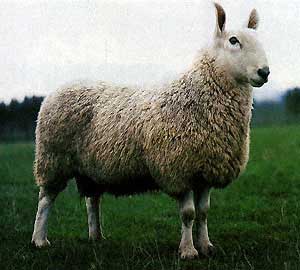Type the name of the breed you're looking for below
[wpdreams_ajaxsearchlite] Don't see the breed your're looking for? Click here and let us know!
Border Leicester sheep
| Place of Origin | England |
| Origin | The Border Leicester is a breed of sheep originating in England and raised primarily for meat. Border Leicesters are polled, long-wooled sheep. Though large in size and robust, they are also docile. The breed has been exported to other sheep producing regions such as Australia and the U.S. The Border Leicester was developed in 1767 in Northumberland, England. Their name derives from the fact that their birthplace is near the border with Scotland, and their foundation stock were Dishley Leicester rams. The ewes used were either Teeswater or Cheviot, though which one exactly is often disputed. They were a fairly common breed in the U.K. by the 19th century. |
| Purpose | Meat |
| Characteristics | The live weight of a mature Border Leicester ram will be in the range of 140–175 kg (309–386 lb) and a mature ewe 90–120 kg (200–260 lb). A yearling ewe is around 64 kg (141 lb). Their white wool tends to be very long and by Merino standards, broad crimped (about 32 to 38 microns), and is used for medium to heavy weight garments. This wool, though, is prized by spinners because of the crimp and lustre. The sheep are normally shorn twice a year when the wool has reached a length of around 100 mm (3.9 in). Lambs when shorn have an average of 1.8 kg (4.0 lb) of wool; yearlings have a larger body and can have as much as 3.2 kg (7.1 lb) at each shearing. The U.S., Australian and New Zealand Border Leicesters very rarely sport the extreme of British flocks. All strains of Border Leicesters are known for their docility. They have large upright ears. They produce good milk and are good mothers. |
| Other Considerations | Internationally: Registered flocks are now found in England, Ireland, Scotland and Wales. Border Leicester sheep have been exported to British Guiana, Canada, China, Colombia, South Africa, France, Spain, Portugal, United States, India, Japan, Yugoslavia, Iran, Hungary, Russia, Turkey and Switzerland. Border Leicester sheep were imported to Australia in 1871, where they now have a large number of stud flocks. Border Leicester rams are used for mating with Merino ewes to breed the first-cross mothers that are so valuable for the production of prime lambs. Border Leicester Merino cross ewes produced in this way offer the greatest overall performance when breeding meat type sheep, with a well proportioned carcase, high fertility, good foraging ability and good milk production. Border Leicester Merino cross ewes are mated to shortwool rams (e.g. Poll Dorset or Southdown) to produce prime lambs, which grow rapidly to market weights and have the ideal carcase shape. The vast majority of Australian lambs produced for meat are bred in this manner. Border Leicester sheep also contribute about 50 percent of the genetics used in the Gromark breed of sheep that were developed in Australia. The breed was imported into New Zealand in 1859, and after refrigeration was introduced in the 1880s, the Border Leicester was used as a crossing sire to produce heavyweight lambs and wether mutton. The Border Leicester was later used to develop New Zealand's Border-Romney cross (Coopworth) and the Border-Corriedale (Borderdale) breeds. The first breed association was formed in 1888 in the U.S. Currently, there are two associations: American Border Leicester Association and the North American Border Leicester Association. Breeders show their sheep at county shows and fairs throughout the year with a National Show being held annually at the North American International Livestock Exposition held in Louisville, Kentucky every November. |



